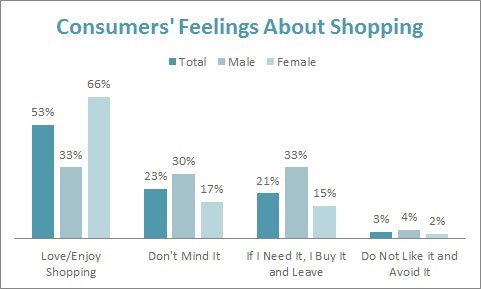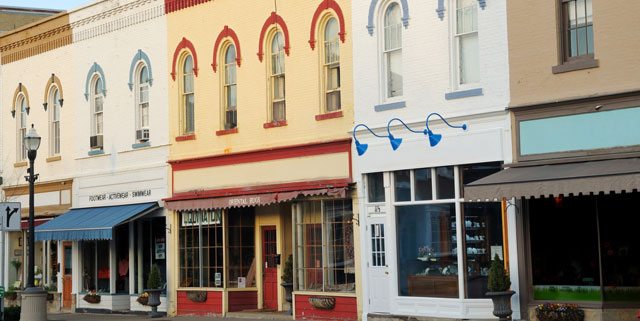At retail, brands have historically been built on consistent experiences across all locations. But some retailers are playing with this technique, tweaking both the design details and the product mix to give in-store shoppers a more tailored, localized shopping experience.
[quote]Benetton Group operates more than 6,500 stores in 120 countries, proving it knows how to work a formula. However, with choice stores, like units in New York, Chicago and Miami, it has shown that blending in with its surroundings can help it stand out, says Ari Hoffman, CEO.
“By localizing, in a sense, we are creating a unique environment,” Hoffman says. “The consumer is accustomed to seeing multi-national chains look the same everywhere. It’s a breath of fresh air to see the store look unique and be mindful of the local mood and spirit.”
More than half of all consumers “love or enjoy” shopping for clothes, according to the Cotton Incorporated Lifestyle Monitor™ Survey. On average, consumers go apparel shopping about twice per month in-store and once a month online.
McMillanDoolittle’s Anne Brouwer, senior partner, says brands should take a positive view on localization strategies.
“It’s not about blending in and becoming less distinctive, and it’s not about violating or abandoning the retailer’s brand image,” Brouwer says. “It’s about standing out from the competition by demonstrating they understand what’s unique and important to the local customer — they may be big but they can be just as smart about what these customers want as a local merchant. It can demonstrate caring and commitment.”
To that end, Macy’s has demonstrated the success of tailoring its store assortment based on the clientele that shops each store. Its “My Macy’s” program localizes the merchandise assortment, marketing, and shopping experience not just regionally, but store by store.
“We continue to identify and share the best examples of what’s working in one place so we can tailor a version of that best practice in other stores with a different mix of customers,” Terry Lundgren, chairman, president and CEO, explained recently to shareholders. “We are cultivating a keener sense of entrepreneurism in each store so we act and react at a point very close to the customer.”
Brouwer praises the “My Macy’s” program.
“Macy’s is investing a huge effort in their localization – from tailoring brand mix by store, to adapting assortments, colors and sizes to the demands at the local level, to being able to design individualized marketing messages that are bringing one-to-one communication to life.”

These major chains are the top choices for consumers shopping for apparel. The Monitor survey shows 62% shop at mass merchants, followed by chains (57%), department stores (41%), off-pricers (35%) and specialty stores (33%) — like Nike.
When the athletic footwear and apparel leader opened its ninth Nike concept store in the Georgetown area of Washington, D.C., last year, it highlighted aspects of its local surroundings, making it more approachable for the young high school and college students that abound in town. The store incorporated local high school logos and mascots into its cash wraps; photography featuring local D.C. running landscapes; and a NIKEiD table created out of a local college scoreboard. Nike Georgetown also served as a hub for the inaugural Nike Women’s DC Half Marathon, which was held last April.
Across the country, Tommy Hilfiger opened its West Hollywood flagship, incorporating both design and merchandise choices that reflect the sensibility of the entertainment capital. Industrial-style movie spotlights and glamorous starburst chandeliers comfortably share space with the store’s more traditional style. Rotating collectibles like Marilyn Monroe’s cowboy boots and a Michael Jackson Hilfiger sweater will be on display. And the inventory even includes a red carpet capsule collection for men designed exclusively for the store.
A store’s environment can play an important part in influencing the customer. While 62% get their apparel ideas from what they already own and like, a solid 42% look to store displays for guidance, according to Monitor data, followed by people seen regularly (34%) and the Internet (32% – up significantly from 28% last year). When Benetton wants to attract customers with a unique store design, it changes up the finishes and color scheme, and adds a layer of locally inspired fixtures, decorative objects, and props.
“As we create unique environments in iconic locations, we never deviate from the brand heritage. We just bring the local flavor in to the Benetton world,” Hoffman says, adding that the retailer will continue to add localized units, but only in areas that have a distinct look. “It shows that a global brand can be in tune with the local customers and environment. We do not want to have a ‘vanilla box’ mentality.”
Brouwer says this mom-and-pop approach is about keeping the retailer’s brand image and standards, but relating to the local vernacular.
“It takes tremendous infrastructure, data management and sophisticated analysis to do this well — but it’s driving significantly better results for retailers who are committed to it.”
